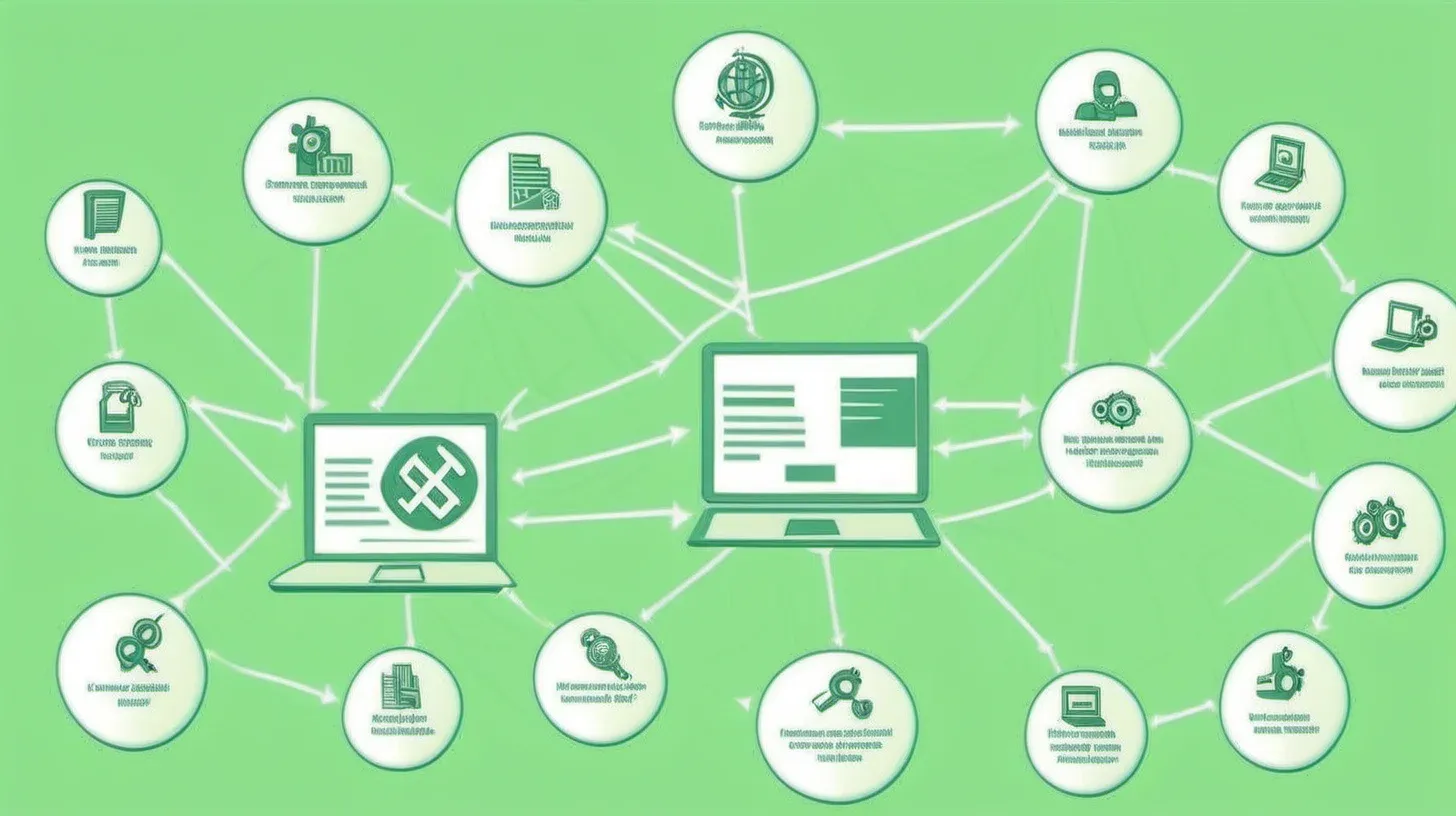Mastering SEO XML Sitemaps For Improved Indexing

Are you sure you didn't lose your great website? The XML sitemap will help you do well in search engines as you look around.
Mastering its tricky tracks can help ranking peers and Google bots find the hidden gems on your site. There are many ways to make your SEO XML sitemap stand out, and this guide will show you how to do all of them.
Believe me, these SEO tips, tricks, and methods will help you take over the search engine like a pro!
What is an XML Sitemap?
In simple terms, an XML sitemap is a file that lists all the pages on your website, along with important information about each page, such as when it was last updated.
This file is then submitted to search engines, like Google, to help them crawl and index your website more efficiently. Think of it as a roadmap that guides search engines through your website's content.
In an XML sitemap, the <urlset>, <url>, and <loc> components work together to build a detailed directory of a website's pages.
Having an XML sitemap for your website is important,sitemaps. as it helps search engines understand the structure and hierarchy of your website. This allows them to index your pages more accurately and display them in search results for relevant queries. Without an XML sitemap, search engines may not discover all of your website's pages, leading to lower visibility and potentially missing out on valuable traffic.
How Do Search Engines Use Sitemaps?
Before we dive into the specifics, let's first understand how do search engines use sitemaps. In simple terms, an XML sitemap is a file that contains a list of all the pages on your website. This helps search engines like Google, Bing, and Yahoo to crawl and index your website more efficiently. Here’s how!
Initial Sitemap Discovery
When a search engine discovers your website, it will look for a sitemap in the root directory. If it finds one, it will use it to crawl and index your website. This is why it's important to have an updated sitemap on your website.
Crawling Priority And Efficiency
Sitemaps also allow you to prioritize certain pages on your website for crawling. By setting a priority level for each page, you can tell search engines which pages are more important and should be crawled more frequently. This can greatly improve the efficiency of search engine crawlers and ensure that your most important pages are indexed.
Indexing And SERP Placement
Sitemaps also play a crucial role in the indexing and placement of your website on search engine results pages (SERPs). By providing a complete list of your website's pages, you increase the chances of all your pages being indexed. This, in turn, can improve your website's visibility and ranking on SERPs.
Handling Dynamic Content
One of the biggest challenges for search engines is indexing websites with dynamic content. With an XML sitemap, you can include all the URLs of your dynamically generated pages, making it easier for search engines to crawl and index them.
Frequency Of Sitemap Submission
It's important to regularly update and submit your sitemap to search engines, especially if your website has frequent content updates or changes. This ensures that search engines have the most up-to-date information about your website, leading to better indexing and ranking.
How To Use XML Sitemap For SEO

Here are key strategies for optimizing XML Sitemap for SEO to enhance visibility, crawlability, and overall search engine efficacy.
Priority And Change Frequency Settings
When creating your XML sitemap, it is important to set priority and change frequency tags for each page. These tags indicate to search engines the importance and how often your pages are updated. This helps search engines understand which pages to crawl and index more frequently, increasing the chances of your content being discovered and ranked.
Inclusion Of Relevant Metadata
In addition to priority and change frequency tags, it is crucial to include relevant metadata in your XML sitemap. This includes titles, descriptions, and keywords that accurately describe your content. This information helps search engines understand the context and relevance of your pages, improving the chances of your website appearing in relevant search results.
Optimizing for Mobile And Multimedia
With the increasing use of mobile devices and multimedia content, it is essential to optimize your XML sitemap for these formats. This includes providing mobile-friendly versions of your website and including video and image sitemaps. This ensures that your content is fully indexed and can be found by users searching on different devices.
Integrating Hreflang For International SEO
For websites with international audiences, it is crucial to integrate hreflang tags in your XML sitemap. These tags indicate to search engines which language and country-specific versions of your website should be shown to users in different regions. This improves your website's visibility and relevance in international search results.
Monitoring And Analytics Integration
Regularly monitoring your XML sitemap and integrating it with your website's analytics can provide valuable insights into your website's performance, including search engine behavior. This allows you to track changes in indexing and identify any issues that may be hindering your website's SEO efforts.
Sitemaps And E-commerce SEO
If you have an e-commerce website, utilizing XML sitemaps can greatly benefit your SEO efforts. By including product pages in your sitemap and optimizing them with relevant metadata, you increase the chances of your products appearing in relevant search results, driving more traffic and potential customers to your site.
SEO Sitemap Best Practices Checklist

Before we jump into the implementation of a successful XML sitemap, let's go over some general SEO sitemap best practices to keep in mind.
URL Structure And Organization
The structure and organization of your website's URLs play a crucial role in SEO, and this also applies to your XML sitemap. Use a logical and consistent URL structure that reflects the hierarchy of your website. This will help both search engines and users navigate your site more easily.
Product Pages
If your website includes e-commerce or product pages, it's important to include them in your XML sitemap. This will ensure that these pages are properly indexed and appear in relevant search results. Be sure to include all necessary information for each product, such as title, description, and image URLs.
Inclusion Of Canonical Tags
Canonical tags are used to indicate the preferred version of a page when there are multiple versions with similar content. Including these tags in your XML sitemap can help prevent duplicate content issues and improve your website's overall SEO.
Handling Redirects And Error Pages
Inevitably, your website may encounter redirects or error pages. It's important to handle these correctly in your XML to avoid any negative impact on your sitemap SEO. Ensure that all redirects and error pages are properly included and that the correct HTTP status codes are used.
Regular Updates And Submission Frequency
As mentioned earlier, it's crucial to regularly update your XML sitemap to reflect any changes to your website. However, it's also important to consider the frequency of sitemap submission to search engines. Submitting your sitemap too often can be seen as spammy, while not submitting it frequently enough can make it difficult for search engines to keep up with your website updates.
Verifying Sitemap Integrity
Before submitting your sitemap to search engines, it's important to verify its integrity. This can be done through various tools such as Google Search Console or third-party sitemap validators. These tools will check for any errors or issues that may affect your sitemap's effectiveness.
Utilizing Search Console Insights
Google Search Console provides valuable insights into how your website is performing in search results. Utilize this tool to track the indexing of your XML sitemap and identify any potential issues or improvements that can be made.
FAQs About XML Sitemaps
What Is The Primary Purpose Of An Xml Sitemap?
XML Sitemaps serve as a roadmap for search engines, providing a structured list of URLs on a website. This helps search engine crawlers discover and index content more efficiently, ultimately enhancing the site's visibility in search results.
How Often Should I Update My XML Sitemap?
Regular updates are crucial to reflect any changes in your website's content or structure. For dynamic sites, consider updating the XML Sitemap whenever significant updates occur. However, for static sites, periodic updates may be sufficient, depending on the frequency of content changes.
Can XML Sitemaps Influence My Website's Ranking In Search Results?
While XML Sitemaps themselves do not directly impact rankings, they play a crucial role in facilitating search engine crawling and indexing. A well-optimized XML Sitemap can contribute to improved visibility and accessibility, indirectly influencing rankings by ensuring that search engines accurately understand and index your content.
Should I Include Every Page In My XML Sitemap?
It's generally recommended to include all essential pages in your XML Sitemap. However, excluding certain pages, like duplicate content or pages with noindex tags, can be strategic. Tailor your XML Sitemap to include pages that contribute positively to your SEO goals and user experience.
